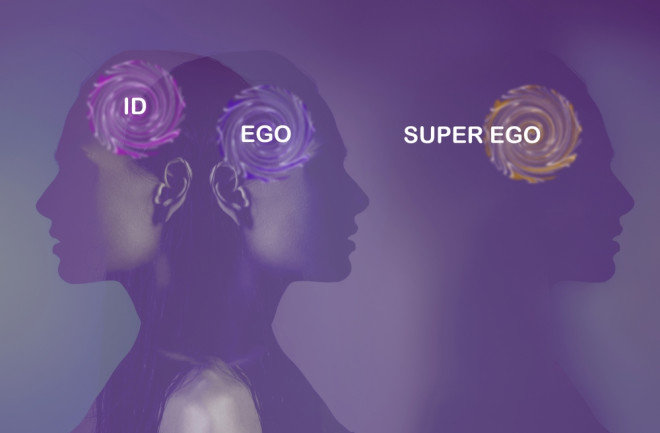There’s an academic exercise in psychology classes that asks students to take Sigmund Freud’s concept of the id, ego, and superego and apply it to characters from The Simpsons. Homer’s impulsiveness typically casts him as the id, Marge’s down-to-earth mentality makes her the ego, and Lisa’s conscientiousness represents the superego.
The activity helps students learn about the history of psychology, and although Freud’s theory directed the discipline for decades, scholars now debate whether modern neurology has made the id, ego, and superego irrelevant.
Freud’s Personality Theory: Three-Part Structure
Freud’s early writings on the superego began in 1895 when he considered the superego as a function of judgment and described it as a type of “watchdog.” In his 1923 work, The Ego and the Id, he introduced a three-part psychic structure that developed during a person’s childhood.
Exploring the Id
The first part, the id, was both innate and unconscious. Freud saw it as the driving force behind a person’s impulse to satiate their desires. The id wasn’t conceptualized as something that regulated or judged a person’s needs or wants. Rather, the id was the animalistic compulsion to seek pleasure and satisfy impulses.
The Development of the Ego
The ego began to develop within the first few years of a child’s life, Freud argued. The ego was the person’s sense of self, and it had to negotiate between the id’s impulses and the superego’s cautious urgings to not act in ways that would be socially unacceptable.
Understanding the Superego
Around the age of six, Freud theorized that a person’s superego began to form. Freud saw the superego as a guardian that pressured the ego to resist the id’s impulses in order to fit social norms. Specifically, Freud argued the superego developed in childhood as a part of the Oedipal resolve, a highly controversial theory that held that young boys resented their fathers as romantic rivals for their mother’s affections.
Read More: Top 5 Psychology Theories from Sigmund Freud
Is Freud's Personality Theory Still Relevant?
For a long time, Freud’s theories were very influential, and although they may still have a presence in popular culture, clinicians rely on evidence-based approaches. Freud’s ideas continue to be debated, and many scientists argue they don’t line up with modern neurology.
Challenging Freud's Superego Concept
Freud’s concept of the superego is one theory that current neurological research doesn't support. Freud’s theory held that a child develops their superego after age six, and the superego serves to regulate their behaviors and help them achieve socially appropriate interactions.
Read More: Supporting A Child's Rapidly Developing Brain
Scientific Research on Early Socialization
Research, however, has found that children form bonds much earlier in life and process information on how to behave at a younger age than Freud suggested. Infants’ ability to receive and send direct gazes is thought to be demonstrative of how children process social information.
Measuring Superego in Infant Behavior
One example of a recent study that explores infants’ ability to send and receive direct gazes comes from a March 2023 study in Scientific Reports. Researchers recruited 55 baby-caregiver pairs in which the average infant age was 12 months. Both the baby and their caregivers were connected to an electroencephalogram (EEG) in order to measure brain activity when the baby initiated or received a direct gaze from their caregiver.
They found increased activity by both the baby and their caregiver when they were the ones that initiated a direct gaze. The authors noted that an infant’s early life is spent in the company of an adult caregiver, and infants develop an ability to perceive social cues and communicate through various signals such as smiles, stares, or vocalizations.
Testing Early Socialization
Another example of research that supports early socialization and regulation comes from a study that examined newborns’ abilities to register a gaze. In a 2002 study in PNAS, researchers worked with 17 healthy newborns whose mean age was an adorable 72 hours. Each infant was positioned on the researcher’s lap about 30 cm (~11 in) from a translucent screen. The screen used a colorful dot to attract the newborn’s attention, and then images of faces with direct or indirect gazes appeared on the screen.
The researchers found their teeny participants looked at the faces with direct gazes for an average of 106.8 seconds and indirect gaze for 63.7 seconds. They concluded that within the first year of an infant’s life, they are capable of looking to others’ behavior for information.
Read More: Bullying and Our Mental Health: How Does It Affect Our Kids' Brains?
Superego and Social Bonds
If newborns as young as 72 hours prefer direct gazes, the ability to form bonds and later perceive social norms happens much younger than Freud’s argument that the superego forms around age six.
Social scientists have come to recognize that children have “an innate predisposition to sociality,” which means socialization allows them to learn how to regulate themselves early in life so they can be nurtured in their family environment and successful in their school environment.
Neurological Development for Social Engagement
Neurologists have also found that a baby’s brain development involves the development of neural pathways that prime the brain for social engagement. In particular, the right hemisphere of the infant’s brain undergoes neurological development that leads to the ability to relate to others.
Reevaluating Child Development
Thus, the concept of the superego and the argument that regulation began after the resolution of the Oedipal phase conflicts with the current understanding of child development, which holds that babies and toddlers receive feedback on their behavior and engage with this information at a much younger age.
Read More: What Is MBTI: Is the Myers-Briggs Test Still Valid?

